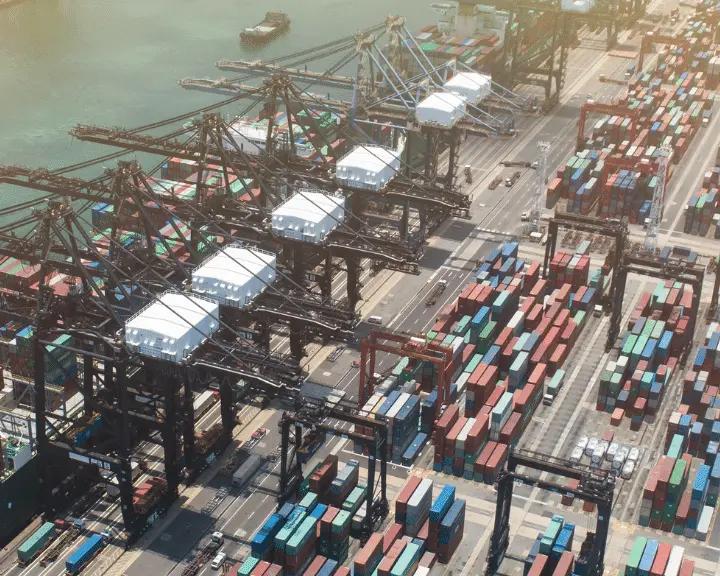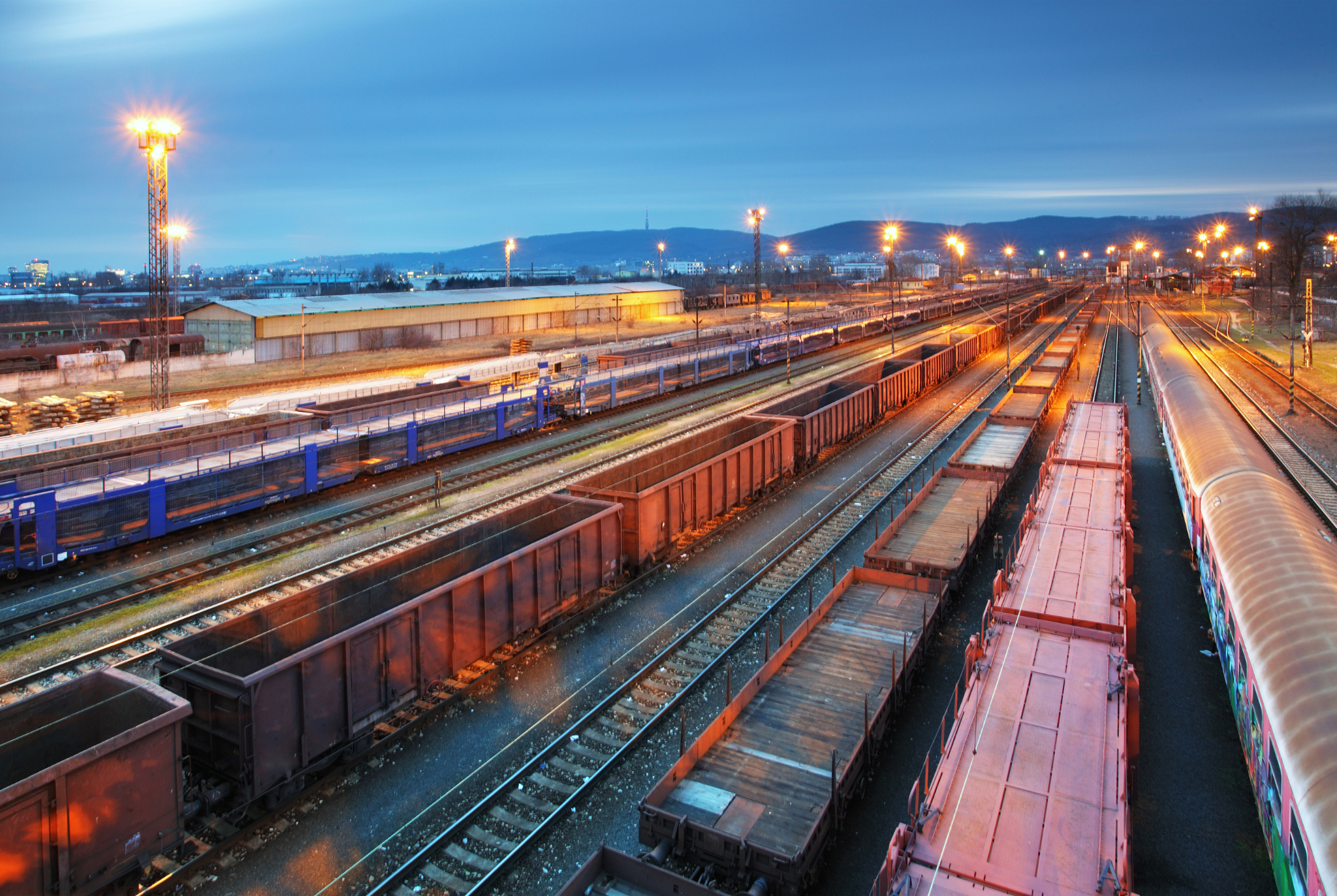Supply chain digitization prepares your company for resilient growth at any pace, and helps you seize opportunities to scale your business, whether you’re processing ten transactions a day or 10 million.
Supply Chain Trends
The supply chain industry is at a pivotal moment. As companies grapple with increasing complexity, rising costs, and unpredictable disruptions, automation has become essential rather than optional.
A recent industry report projects that the global supply chain automation industry will be worth $17.5B globally by 2028. AI, IoT, and hyperautomation advancements drive it.
Automation is not just about efficiency—it’s about resilience. Companies that leverage AI-driven decision-making, real-time data integration, and sustainability-focused automation will be better equipped to navigate ongoing disruptions.
With supply chain tasks becoming more interconnected, modern supply chains require seamless integration and real-time adaptability to thrive in this evolving landscape.
Chain.io’s supply chain automation solution enables seamless data exchange and automation, helping logistics providers and shippers transition into the next generation of supply chain efficiency.
Let’s review the supply chain automation trends you should know.
The growing role of AI and machine learning in logistics
Artificial intelligence (AI) is evolving from basic task automation to predictive intelligence, helping companies proactively address challenges before they arise. AI-powered supply chain automation tools are streamlining operations, improving customer satisfaction, and enabling businesses to achieve cost savings through smarter forecasting and workflow automation.
AI use cases in logistics
- Demand forecasting and inventory management: AI predicts inventory needs based on real-time and historical data, ensuring optimal stock levels and reducing waste.
- Autonomous decision-making: AI-powered systems dynamically reroute shipments in response to traffic delays, weather disruptions, and capacity constraints, minimizing the impact of supply chain disruptions.
- Customer communication: AI-driven chatbots and virtual assistants provide real-time shipment tracking, updates, and issue resolution, improving the overall customer experience.
By leveraging AI, companies can achieve greater accuracy, improved supply chain efficiency, and enhanced customer satisfaction. Businesses that fail to embrace AI-driven automation risk being left behind as competitors optimize supply chain functions with smarter, real-time solutions.
Learn more about how automation is shaping supply chain management.
Rise of integration platforms over point-to-point connections
For decades, logistics companies have relied on point-to-point electronic data interchange (EDI) connections, which are slow, rigid, and costly to maintain. The shift toward integration platforms is reshaping how companies manage data exchange.
EDI vs. API integration differs in this way:
- Traditional EDI: Relies on batch processing, rigid mapping, and high maintenance costs.
- Modern API-driven platforms: Enable real-time data exchange, seamless integration, and greater scalability.
Many companies attempting to build their own DIY integrations often lack the expertise to create efficient, scalable solutions. Integration platforms like Chain.io offer supply chain automation benefits, eliminating the need for complex in-house integrations by supplying pre-built connectors. This accelerates digital transformation, enhances flexibility, and reduces IT overhead.
Hyperautomation: Enabling end-to-end supply chain automation
Hyperautomation goes beyond individual tasks. Through AI, robotic process automation (RPA), and machine learning enable entire supply chains to function with minimal human intervention. This approach transforms warehouse operations, logistics workflows, and existing supply chain processes.
Key hyperautomation trends:
- End-to-end order and inventory management: AI-powered systems manage order lifecycles automatically, improving fulfillment accuracy and reducing manual supply chain tasks.
- Logistics workflow automation: Freight bookings, customs documentation, and compliance processes become fully automated, reducing human error and delays.
- Data validation and error reduction: AI ensures accurate shipment details before processing, preventing costly errors and improving compliance.
Companies that embrace hyperautomation can achieve a more resilient supply chain, reducing inefficiencies and unlocking greater scalability while improving warehouse automation and operational precision.
Increased focus on real-time data and predictive analytics
Supply chains can no longer afford delays in data processing. Real-time data integration and predictive analytics are becoming essential for maintaining an efficient, proactive supply chain. These tools help businesses monitor the entire supply chain and make informed decisions in real-time.
How real-time data is transforming supply chains:
- Proactive problem-solving: AI-powered systems detect disruptions before they escalate, allowing logistics teams to take immediate action.
- Dynamic routing optimization: Real-time traffic, weather, and capacity data enable AI-driven route adjustments for faster deliveries and reduced lead times.
- Automated trade compliance: AI ensures adherence to global trade regulations, reducing risk and avoiding fines.
Companies prioritizing real-time data automation are seeing significant gains in supply chain efficiency, cost savings, and customer satisfaction while improving overall supply chain operations.
Robotics and IoT expanding automation capabilities
Automation in warehouse operations and last-mile logistics is accelerating, thanks to innovations in robotics and IoT (Internet of Things). These advancements are helping businesses create a more efficient supply chain by leveraging robotic process automation and real-time monitoring.
Robotics and IoT-driven advancements:
- IoT-enabled freight tracking: Smart sensors monitor temperature, humidity, and security conditions in real-time, improving shipment visibility and security.
- Autonomous delivery vehicles and drones: Logistics providers are piloting drones and self-driving trucks to streamline last-mile delivery, reducing costs and improving efficiency.
As companies adopt automated supply chains, integrating robotics and IoT technologies will be essential for maximizing efficiency and reducing operational costs.
Supply chain sustainability and green automation initiatives
Sustainability is no longer just a priority—it’s a requirement. Governments, investors, and customers are pushing for greener, more efficient supply chains, and automation is pivotal in reducing carbon footprints while improving supply chain sustainability.
Automation’s role in sustainability:
- AI-powered carbon tracking: Monitors emissions across global supply chains, ensuring compliance with new regulations and sustainability targets.
- Optimized route planning: Reduces fuel consumption through AI-driven freight routing, cutting transportation emissions.
- Automated ESG compliance: Ensures logistics partners meet sustainability standards, helping businesses align with environmental, social, and governance (ESG) goals.
By embracing supply chain automation tools designed for sustainability, companies can achieve cost savings while improving environmental impact.
Future-proofing your supply chain with automation
Companies that thrive in 2025 and beyond will be those that strategically invest in automation. AI, real-time data analytics integration, and robotics are no longer emerging trends—they’re the foundation of the modern supply chain landscape.
Businesses must assess which supply chain automation tools will provide the best ROI and how to integrate them seamlessly. Chain.io simplifies automation integration through pre-built connections, allowing logistics providers and shippers to future-proof their operations.
Ready to streamline your logistics operations?
Request a demo of Chain.io’s automation platform and take the first step toward a more efficient, scalable, and resilient supply chain.







